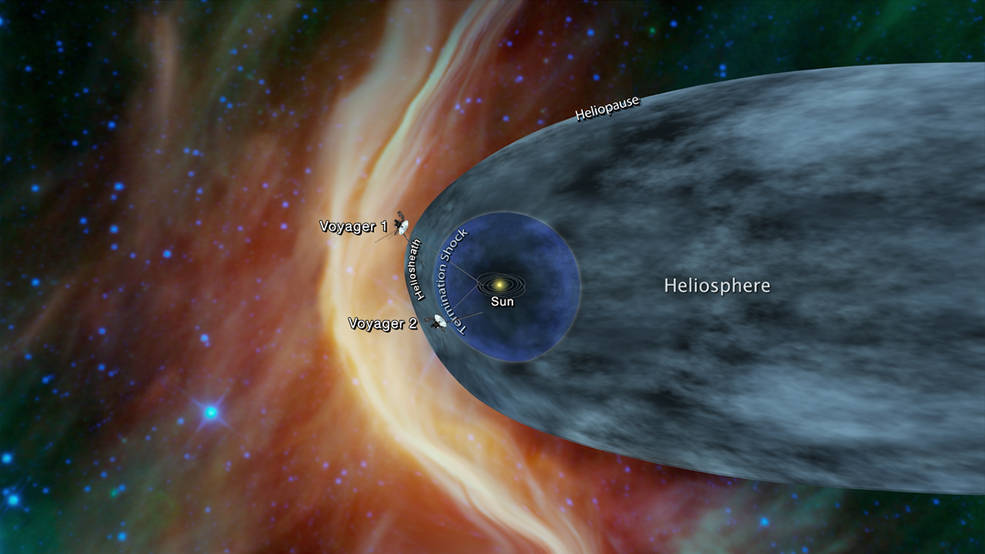
 Credit: NASA/JPL-Caltech
Credit: NASA/JPL-Caltech
Beyond the Bubble
Voyager 1 and Voyager 2 are NASA spacecraft designed to explore the outer solar system. Voyager 2 was actually launched first, on August 20, 1977, 16 days before Voyager 1. It's called Voyager 2 because it took a more circuitous route and so reached Jupiter and Saturn after Voyager 1, but this trajectory allowed Voyager 2 to spend more time observing Uranus and Neptune. After its prime mission ended with an encounter with Neptune in 1989, Voyager 2 has been speeding through the solar system and out into interstellar space. This August, its Cosmic Ray Subsystem instrument (still working and returning data after all these years in the harsh environment of space) began to show an increase the the flux of cosmic rays (high-energy protons and atomic nuclei) hitting the spacecraft. Since the flux of solar cosmic rays should decrease as Voyager 2 moves away from the Sun, astronomers believe this increase is due to an increase in the number of cosmic rays which originate beyond the solar system. These interstellar cosmic rays are produced by flaring stars, supernova, X-ray binary systems and other extremely powerful sources in space. The solar wind and solar magnetic field, coupled with the motion of the Sun through the Galaxy, creates a "bubble" around the solar system, as shown in the illustration above. This bubble is called the heliosphere, and marks the boundary of our solar system. The increase in cosmic ray flux seen by Voyager 2 suggests that Voyager 2, currently more than 11 billion miles from earth, is near the heliopause, the border beyond which lies the outer dark of interstellar space. Voyager 1 itself passed the heliopause back in 2012, though along a very different route.
Published: October 8, 2018
<
HEA Dictionary ● Archive
● Search HEAPOW
● Other Languages
● HEAPOW on Facebook
● Download all Images
● Education ● HEAD
>

Each week the HEASARC
brings you new, exciting and beautiful images from X-ray and Gamma ray
astronomy. Check back each week and be sure to check out the HEAPOW archive!
Page Author: Dr. Michael F. Corcoran
Last modified Tuesday, 27-Feb-2024 10:08:25 EST


